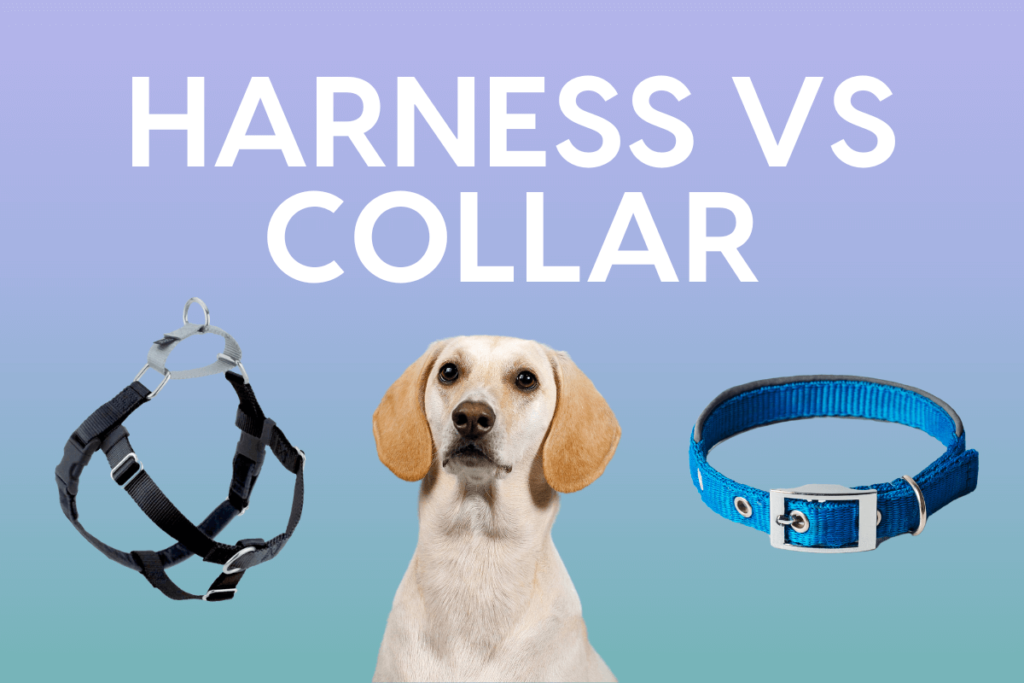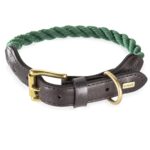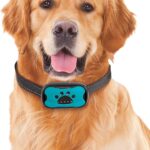Benefits of Using a Harness Instead of a Collar: Enhanced Safety, Comfort, and Control
Meta Description:
Explore the benefits of using a harness instead of a collar for your dog. Learn how harnesses provide better safety, control, and comfort during walks and training.
Introduction
When it comes to walking your dog, choosing between a collar and a harness can be a tough decision for many pet owners. While collars are great for holding ID tags and quick walks, harnesses offer distinct advantages in terms of safety, control, and comfort. The benefits of using a harness instead of a collar are numerous, especially for dogs that pull, have specific health issues, or need extra training.
Harnesses are designed to distribute pressure more evenly across a dog’s body, particularly on the chest and back, instead of focusing solely on the neck. This is essential for pets with respiratory issues, neck injuries, or for those that tend to escape collars. In this article, we’ll dive into the top benefits of using a harness, explain how it improves your dog’s health and safety, and provide tips on selecting the right harness for your dog.
1. Enhanced Safety with a Harness
Reduced Neck Pressure
One of the most significant benefits of using a harness instead of a collar is the reduction of pressure on your dog’s neck. Collars can cause strain on a dog’s neck, especially when they pull or when the leash is tugged suddenly. This is a common issue for dogs prone to respiratory problems, neck injuries, or tracheal collapse, a condition that is especially common in small or brachycephalic breeds like French Bulldogs.
- Gentler Pressure Distribution: Harnesses spread the pressure across the chest and back, avoiding pressure points on the neck and throat.
- Preventing Breathing Problems: For dogs with respiratory conditions, a harness allows for better airflow, preventing choking or difficulty breathing during walks.
In short, a harness minimizes the risk of exacerbating breathing problems, making it the safer choice for certain breeds and dogs with underlying health issues.
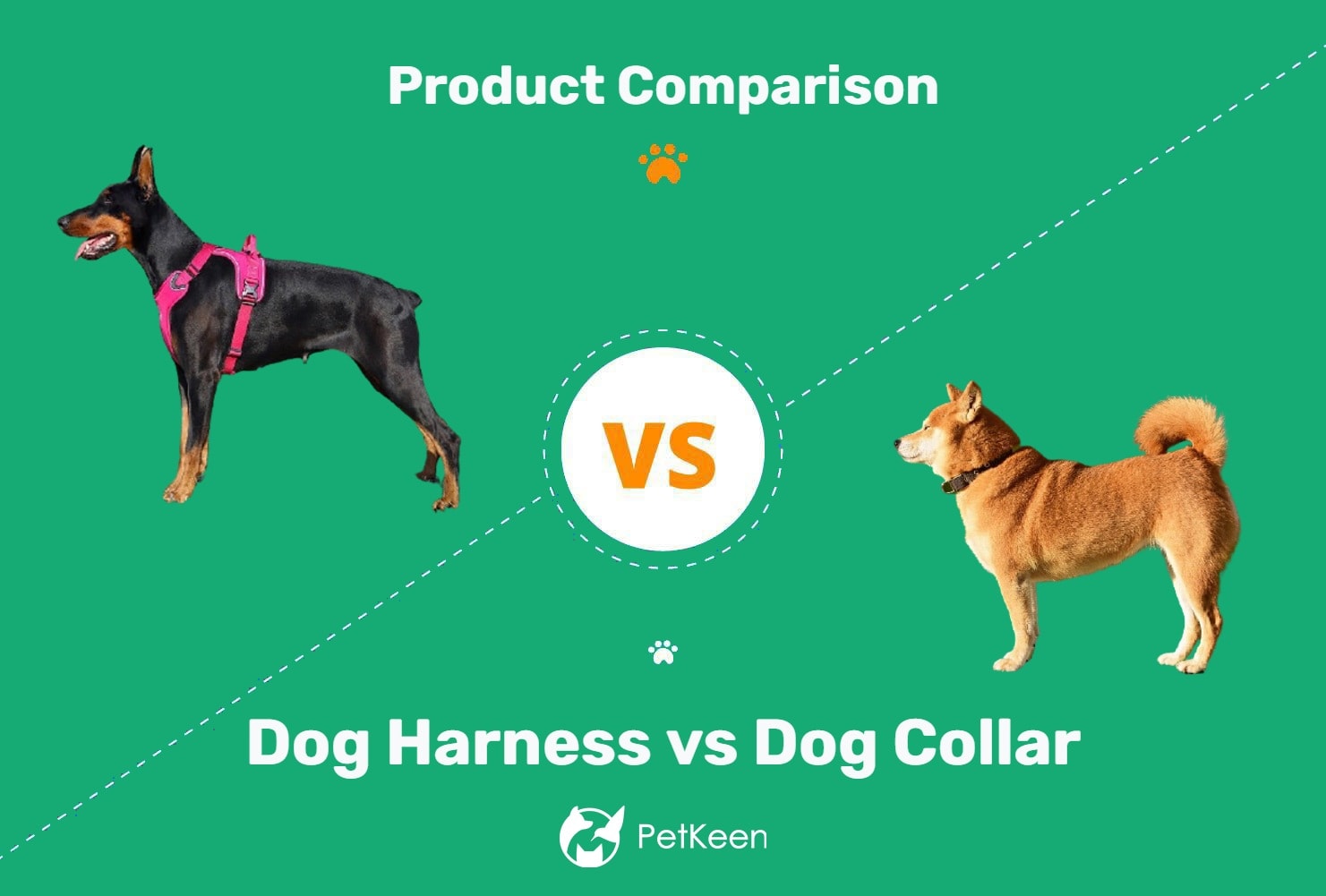
ALT text: Comparison between a dog harness and a collar, highlighting comfort and safety benefits.
Prevention of Escape
Another major advantage of using a harness is its ability to prevent dogs from slipping out and escaping. Many dogs, especially those with a strong desire to explore or those who get anxious, may find a way to slip out of a traditional collar. This can lead to dangerous situations, such as running into traffic or getting lost.
- Secure Fit: Harnesses provide a more secure fit, making it harder for dogs to escape.
- Safety in High-Risk Situations: The added security of a harness ensures your dog stays safely under control, even in chaotic environments.
For pet owners who worry about their dogs slipping out of their collars and running into potentially hazardous situations, a harness is a safer option that offers peace of mind.
2. Improved Control for Walks and Training
Better Handling of Strong or Excitable Dogs
Dogs that are strong, excitable, or prone to pulling can be challenging to handle on walks. A harness gives pet owners better control, especially for dogs that struggle with loose-leash walking. Unlike a collar, which can strain the neck when the dog pulls, a harness works by redirecting the dog’s energy and movement, making walks more manageable.
- Redirects Pulling Behavior: A well-fitted harness gently redirects the dog’s attention towards the owner, reducing the urge to pull.
- Better Leash Control: The chest strap of a harness gives you more control over your dog’s movement, making it easier to guide them on walks.
This feature is particularly useful for excitable dogs that may not be well-behaved on a leash. It allows you to walk your dog with greater ease, turning walks into a more enjoyable experience for both you and your pet.
Training Support
For dogs that are still learning proper leash etiquette, a harness can be a useful training tool. The fit and design of the harness provide support for training, particularly when teaching your dog to walk without pulling.
- Training Assistance: The pressure from a harness, especially front-clip designs, encourages dogs to stop pulling forward and focus on walking calmly by your side.
- Encourages Loose-Leash Walking: Unlike collars, which may choke or discomfort your dog during training, a harness helps reinforce good behavior without harm.
A harness can make leash training more effective by providing gentle correction when your dog pulls, while also preventing choking or discomfort, making it ideal for dogs that are learning the basics of leash walking.
Preventing Pulling Behavior
Many pet owners struggle with dogs that have a tendency to pull on walks. Harnesses can be a key tool in preventing pulling, especially when combined with training. By applying pressure to the chest rather than the neck, a harness provides a safer and more humane method of controlling your dog’s behavior.
- Front-Clip Harnesses: These are particularly effective for dogs that pull excessively, as they redirect the dog’s motion towards the owner.
- No-Pull Harnesses: Designed to discourage pulling behavior, these harnesses can be incredibly helpful for dogs that are particularly strong pullers.
If you have a dog that pulls during walks, a no-pull harness can provide immediate relief, making walks more pleasant and manageable.
3. Comfort and Health Benefits for Your Dog
Comfortable Fit for Long Walks
One of the most appealing benefits of using a harness instead of a collar is the comfort it provides, especially during extended walks. Many dogs find harnesses more comfortable than collars, particularly those that are worn for long periods.
- Even Weight Distribution: Unlike collars that put pressure on the neck, harnesses distribute the weight more evenly across the dog’s chest and back, reducing discomfort.
- Freedom of Movement: A harness allows for more natural movement, which is especially beneficial for dogs who love to run, jump, or engage in high-energy activities.
For dogs that go on frequent or long walks, a harness offers superior comfort, ensuring they remain happy and comfortable throughout their outdoor adventures.
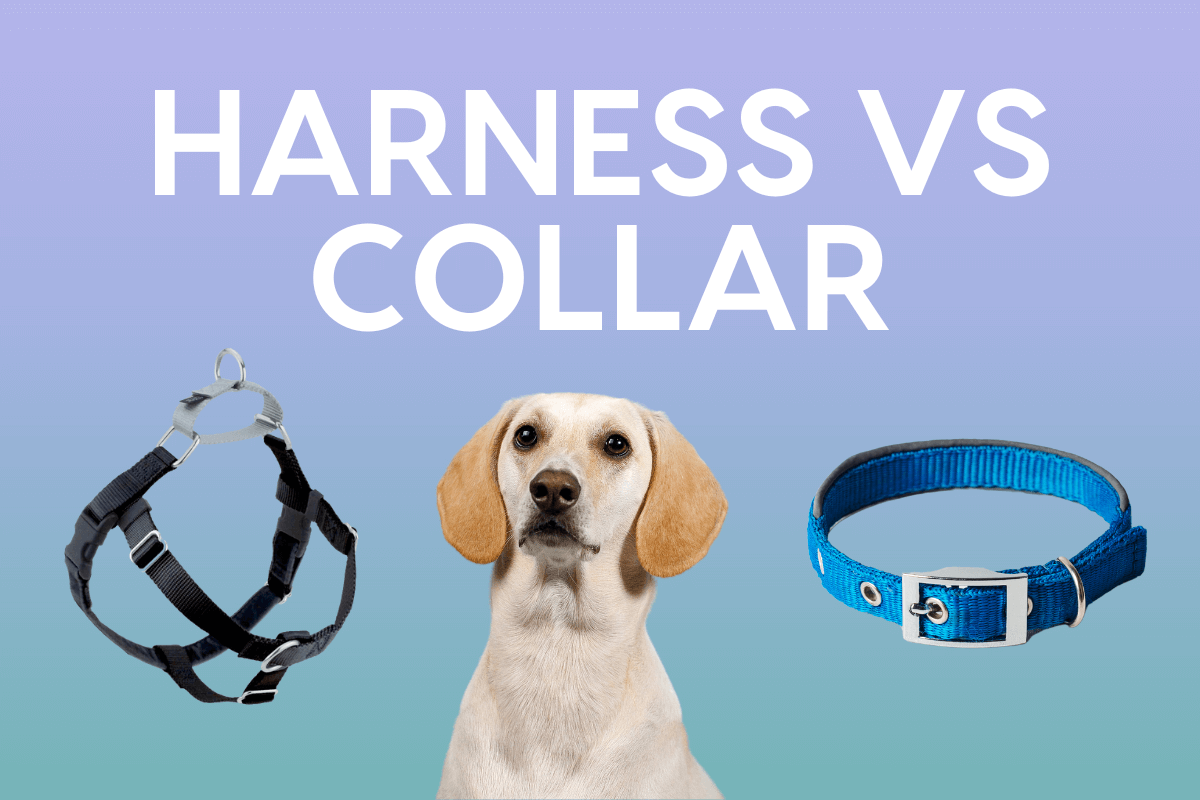
ALT text: Pros and cons comparison between dog harnesses and collars for better comfort and control.
Health Considerations for Dogs with Existing Health Issues
For dogs with pre-existing health problems, such as back pain or spinal issues (like dachshunds), harnesses can provide additional support and help alleviate strain on sensitive areas.
- Back and Spine Protection: Harnesses help prevent unnecessary pressure on the spine, which is particularly important for breeds prone to back injuries.
- Health-Friendly: By avoiding pressure on the neck, harnesses are a great option for older dogs or those with joint issues, ensuring they can enjoy walks without discomfort.
For dogs with specific health concerns, such as arthritis, spinal issues, or breathing difficulties, the benefits of using a harness instead of a collar can be especially important. Harnesses offer a health-conscious alternative to collars that can help prevent further injury and promote overall well-being.
Ready to make walks more comfortable and enjoyable for you and your dog?
Explore the variety of dog harnesses available at Found My Animal. Don’t forget to use mytopdeals10 for 10% off your purchase!
Related Article: Learn more about Choosing the Right Dog Leash to complement your new harness and enhance your walking experience!
Stay tuned for the second half of the article, where we’ll dive into how to choose the right harness for your dog, the different types of harnesses available, and how to properly fit a harness for maximum comfort and control!
4. Choosing the Right Harness for Your Dog
Types of Harnesses: Back-Clip, Front-Clip, and No-Pull Designs
When it comes to selecting a harness for your dog, choosing the right design is key to ensuring comfort, control, and effectiveness. Different types of harnesses are tailored to address specific needs. The benefits of using a harness instead of a collar are even more pronounced when you select the right style for your pet.
Back-Clip Harnesses: These are the most common type of harness and are easy to use for general walking. They’re ideal for dogs that don’t pull excessively and prefer a more relaxed walking experience.
Front-Clip Harnesses: Perfect for dogs that tend to pull on walks. The leash attaches to the front of the harness, redirecting your dog’s attention back to you when they attempt to pull forward. This makes it easier to teach your dog to walk on a leash without tugging.
No-Pull Harnesses: Designed specifically to stop pulling, no-pull harnesses have features such as back and front clips or pressure zones that discourage pulling behavior.
Each type of harness offers distinct advantages depending on your dog’s behavior and needs. For dogs that pull or are excitable, a front-clip harness or no-pull design will give you the best control.
Choosing Based on Dog Size and Behavior
Another key factor to consider is the size and behavior of your dog. Whether you have a tiny puppy or a large, strong breed, selecting the right size and fit is crucial for both safety and comfort.
- Small Breeds: Smaller dogs may benefit from a lightweight, compact harness with soft padding for comfort.
- Large or Strong Breeds: Larger dogs or dogs with a strong pulling tendency may require a sturdier harness with reinforced straps and additional control features.
Proper fit is critical for harness effectiveness—an ill-fitting harness can cause discomfort and potentially lead to injury. Make sure to measure your dog properly and choose a harness that offers adjustability to accommodate growth or changes in body shape.
5. Conclusion: Why Harnesses Are the Smart Choice for Your Dog
In conclusion, the benefits of using a harness instead of a collar are clear. Whether it’s the enhanced safety from reduced neck pressure, the improved control over pulling, or the comfort provided during long walks, harnesses offer a range of advantages over traditional collars. By distributing pressure evenly across your dog’s chest and back, harnesses help prevent injury and provide better control for both training and daily walks.
Harnesses are especially beneficial for dogs with health concerns, strong pullers, or excitable dogs that need extra control. Furthermore, the variety of harness designs—from back-clip to no-pull styles—ensures that you can find the right fit for your dog’s needs. As more pet owners discover these benefits, it’s becoming clear that harnesses are often the safer and more comfortable choice.
Call to Action
Is it time to switch to a harness for your dog? Head over to Found My Animal today and explore a variety of stylish, durable, and comfortable harnesses for your pet. Don’t forget to use mytopdeals10 to save 10% on your purchase. Your dog will thank you for the comfort and safety that come with the right harness!
FAQs: Everything You Need to Know About Harnesses for Dogs
1. What makes Found My Animal products unique?
Found My Animal offers high-quality, durable dog harnesses that provide both comfort and control. Their products are designed to be stylish yet functional, with options that cater to all types of dogs, including those that need extra control, support, or have special health concerns. Plus, their harnesses are made from premium materials that ensure long-lasting wear and safety.
2. How can I use the discount code mytopdeals10 at checkout?
To use the discount code mytopdeals10, visit Found My Animal, select the perfect dog harness for your pet, and proceed to checkout. In the discount code field, enter mytopdeals10 and you’ll receive 10% off your order. It’s that easy to save on quality products for your pet!
3. Are harnesses better for dogs that pull?
Yes, harnesses are excellent for dogs that pull. The front-clip and no-pull harnesses are specifically designed to reduce pulling behavior by redirecting the dog’s movement and giving you better control. These harnesses make walks more manageable and reduce strain on both you and your dog.
4. Can a harness help with my dog’s neck issues?
Absolutely! If your dog has neck issues or respiratory problems, a harness is the better choice over a collar. Harnesses distribute pressure across the chest and back, relieving strain on the neck and throat, which helps prevent further injury and supports better breathing.
5. How do I ensure the harness fits properly?
To ensure the harness fits properly, measure your dog’s neck and chest before purchasing. Most harnesses have adjustable straps to accommodate different sizes. A proper fit ensures the harness is comfortable and effective, not too tight or too loose. Always check that you can comfortably fit two fingers between the harness and your dog’s body for optimal comfort and control.
Related Article: For more tips on Choosing the Right Dog Leash to match your dog’s new harness, visit our related guide.
Ready to make your dog’s walks more enjoyable and comfortable? Visit Found My Animal today and use mytopdeals10 to enjoy 10% off your purchase of a high-quality dog harness. Keep your dog safe and comfortable on every walk!

